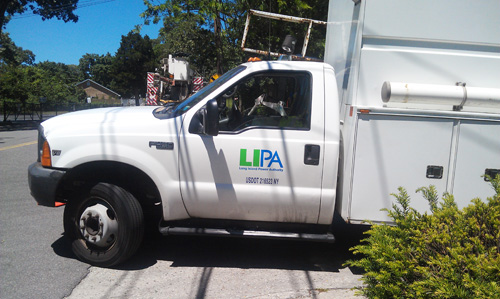Guest Column: Power lines ignored, but trees are savaged

LIPA savaged my trees.
They say they are protecting the power lines, but cutting the trees in half wasn’t necessary. There has to be a better way.
I know it’s not an easy job. Perhaps it always will be thankless, trying to provide utility services in an efficient, cost-effective manner. We might not even notice if it were done well, but we always notice when it is done badly. But LIPA seems to have a uniquely self-defeating approach in the way it carries out its duties.
With power overhead, every strong storm will bring down some lines. It’s inevitable. But how serious is the outage, how effective the response? Are there steps that can be taken to minimize damage and maximize restoration? And what about the needs of the individuals and the communities affected?
The last few storms have wreaked havoc on electric service for North Fork and much of Long Island. Numerous news articles suggest that LIPA has failed to adequately answer almost every one of these questions. Several of my neighbors had a chance to chat with some of the out-of-town emergency crews. These professional linemen were astounded at the sorry state of the utility equipment. Worn out, damaged components, often patched and jury-rigged during a prior storm response. Out-of-date equipment, structurally unsound poles and even a lack of poles on hand to replace those fallen or at risk.
LIPA’s response to Sandy was too slow, too disorganized and some repairs have yet to be completed. The storm snapped a tree in my front yard in half. It pulled down the power line to my house, leaving a hanging live wire in my yard. I phoned LIPA, twice. Two days later, someone came to look. They said the attachment point, a three-dollar hook, was pulled out and they wouldn’t fix their line until I had an electrician fix the hook. An electrician came in and did that immediately, then he called LIPA to attach their line to my service. They again refused and told him to patch it in as best he could. He did it, but told me it was a temporary fix and to get LIPA in to rewire the support as soon as possible.
I called again, but LIPA still hasn’t responded. There are numerous such stories, maybe thousands, many much, much worse.
I should be a proponent of trimming trees to protect power lines, right? I am. I know we have to try to keep trees off and away from the high-voltage lines. The power lines on my street keep the safety systems on Plum Island humming.
There are ways to trim trees to keep them clear of power lines, but still let us have the shade, the air-cleaning qualities, the beauty of a rural setting. In fact, LIPA claims on its website to use an arborist to guide them in tree trimming.
LIPA has trimmed my trees before and they’ve regularly cut off the thin upper branches on the 10 sycamores lining my property that were getting close to the power lines. I’m fine with that, but they recently cut six of my trees in half before I saw a stunted trunk and went out screaming. They’d taken about 20 feet off two of the trees and almost as much on the rest. Few branches are left and I’m far from confident that the trees have enough structure left to survive.
LIPA is supposed to file a plan for trimming with the town, and it appears that they may not have done so. Regardless, LIPA has an obligation to do its preventive maintenance in a responsible way. This was not responsible.
While we’re looking at how to fix the delivery and maintenance of our grid, perhaps we need to revisit the issue of overhead lines. The oft repeated claim is it costs a million dollars a mile to bury the lines. But what does it cost to repair the broken lines over a five-, 10- or 20-year span? Or to replace broken poles and trim trees? What is the harm to businesses, homes and families when the power goes out?
Maybe a look at long-term costs and benefits might prompt LIPA or its successor to reconsider and decide that it is worth the investment to put our power safely underground.
And think how beautiful our roads would be.
Mr. Hanlon lives in Orient.








